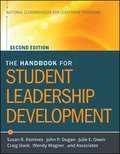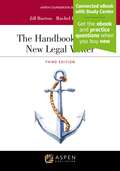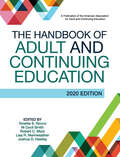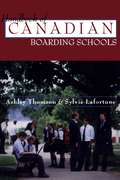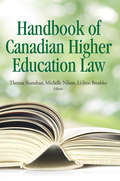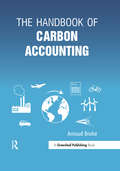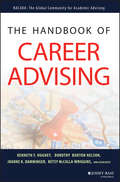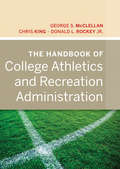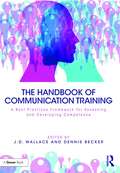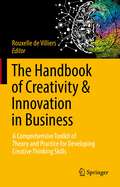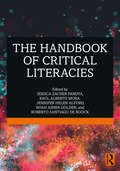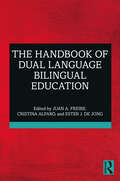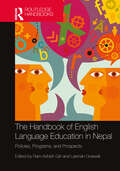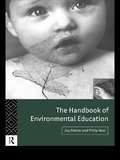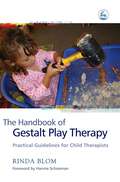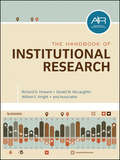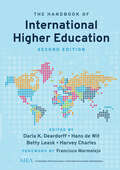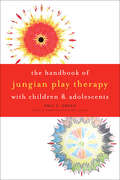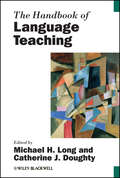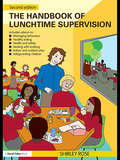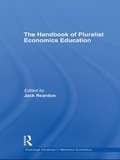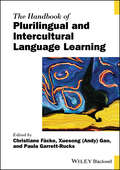- Table View
- List View
The Handbook for Student Leadership Development
by Craig Slack Julie E. Owen John P. Dugan National Clearinghouse of Leadership Programs Wendy Wagner Susan R. KomivesThis is a comprehensive handbook provides essential research, theoretical framing, and practical guidance to help higher education practitioners develop, advance, and sustain a student leadership program. This new and thoroughly revised edition introduces a model for designing and executing any student leadership program, which will serve as a framing device for the book. This model covers: Foundations of Leadership Education, Program Design, Program Context, and Program Delivery. In addition, the book includes a rich, organized array of further recommended resources that will be connected to elements in various chapters.
The Handbook for the New Legal Writer (Aspen Coursebook)
by Jill Barton Rachel H. SmithBuy a new version of this textbook and receive access to the Connected eBook with Study Center on Casebook Connect, including lifetime access to the online ebook with highlight, annotation, and search capabilities. Access also includes practice questions, an outline tool, and other helpful resources. Connected eBooks provide what you need most to be successful in your law school classes.
The Handbook of Adult and Continuing Education
by Tonette S. RoccoCo-published with Colleges and universities are increasingly becoming significant sites for adult education scholarship—in large part due to demographic shifts. With fewer U.S. high school graduates on the horizon, higher education institutions will need to attract “non-traditional” (i.e., older) adult learners to remain viable, both financially and politically. There is a need to develop a better corpus of scholarship on topics as diverse as, what learning theories are useful for understanding adult learning? How are higher education institutions changing in response to the surge of adult students? What academic programs are providing better learning and employment outcomes for adults in college? Adult education scholars can offer much to the policy debates taking place in higher education. A main premise of this handbook is that adult and continuing education should not simply respond to rapidly changing social, economic, technological, and political environments across the globe, but should lead the way in preparing adults to become informed, globally-connected, critical citizens who are knowledgeable, skilled, and open and adaptive to change and uncertainty.The Handbook of Adult and Continuing Education provides rich information on the contemporary issues and trends that are of concern to adult and continuing education, of the programs and resources available to adult learners, and of opportunities to challenge and critique the structures embedded in the field that perpetuate inequity and social injustice. Adult education is a discipline that foresees a better tomorrow, and The Handbook is designed to engage and inspire readers to assist the field to seek new paths in uncertain and complex times, ask questions, and to help the field flourish.The Handbook is divided into five sections. The first, Foundations situates the field by describing the developments, core debates, perspectives, and key principles that form the basis of the field.The second, Understanding Adult Learning, includes chapters on adult learning, adult development, motivation, access, participation, and support of adult learners, and mentoring.Teaching Practices and Administrative Leadership, the third section, offers chapters on organization and administration, program planning, assessment and evaluation, teaching perspectives, andragogy and pedagogy, public pedagogy, and digital technologies for teaching and learning.The fourth section is Formal and Informal Learning Contexts. Chapters cover adult basic, GED, and literacy education, English-as-a-Second Language Programs, family literacy, prison education, workforce development, military education, international development education, health professions education, continuing professional education, higher education, human resource development and workplace learning, union and labor education, religious and spiritual education, cultural institutions, environmental education, social and political movements, and peace and conflict education.The concluding Contemporary Issues section discusses decolonizing adult and continuing education, adult education and welfare, teaching social activism, lesbian, gay, bisexual, trans, queer and straight allies, gender and its multiple forms, disability, older adults and intergenerational identities, race and ethnicity, working class, whiteness and privilege, and migrants and migrant education.The editors culminate with consideration of next steps for adult and continuing education and priorities for the future.
The Handbook of Adult and Continuing Education
by Tonette S. RoccoCo-published with Colleges and universities are increasingly becoming significant sites for adult education scholarship—in large part due to demographic shifts. With fewer U.S. high school graduates on the horizon, higher education institutions will need to attract “non-traditional” (i.e., older) adult learners to remain viable, both financially and politically. There is a need to develop a better corpus of scholarship on topics as diverse as, what learning theories are useful for understanding adult learning? How are higher education institutions changing in response to the surge of adult students? What academic programs are providing better learning and employment outcomes for adults in college? Adult education scholars can offer much to the policy debates taking place in higher education. A main premise of this handbook is that adult and continuing education should not simply respond to rapidly changing social, economic, technological, and political environments across the globe, but should lead the way in preparing adults to become informed, globally-connected, critical citizens who are knowledgeable, skilled, and open and adaptive to change and uncertainty.The Handbook of Adult and Continuing Education provides rich information on the contemporary issues and trends that are of concern to adult and continuing education, of the programs and resources available to adult learners, and of opportunities to challenge and critique the structures embedded in the field that perpetuate inequity and social injustice. Adult education is a discipline that foresees a better tomorrow, and The Handbook is designed to engage and inspire readers to assist the field to seek new paths in uncertain and complex times, ask questions, and to help the field flourish.The Handbook is divided into five sections. The first, Foundations situates the field by describing the developments, core debates, perspectives, and key principles that form the basis of the field.The second, Understanding Adult Learning, includes chapters on adult learning, adult development, motivation, access, participation, and support of adult learners, and mentoring.Teaching Practices and Administrative Leadership, the third section, offers chapters on organization and administration, program planning, assessment and evaluation, teaching perspectives, andragogy and pedagogy, public pedagogy, and digital technologies for teaching and learning.The fourth section is Formal and Informal Learning Contexts. Chapters cover adult basic, GED, and literacy education, English-as-a-Second Language Programs, family literacy, prison education, workforce development, military education, international development education, health professions education, continuing professional education, higher education, human resource development and workplace learning, union and labor education, religious and spiritual education, cultural institutions, environmental education, social and political movements, and peace and conflict education.The concluding Contemporary Issues section discusses decolonizing adult and continuing education, adult education and welfare, teaching social activism, lesbian, gay, bisexual, trans, queer and straight allies, gender and its multiple forms, disability, older adults and intergenerational identities, race and ethnicity, working class, whiteness and privilege, and migrants and migrant education.The editors culminate with consideration of next steps for adult and continuing education and priorities for the future.
The Handbook of Bird Photography
by Bence Mate Jari Peltomaki Markus VaresvuoThe Handbook of Bird Photography distills the knowledge, talent, and experience of three well-known professional wildlife photographers into one beautifully illustrated volume. Written in a manner that is easy to understand, this book offers fresh insight and practical tips that will broaden horizons for nature and bird photographers. The authors share their stories showcasing photographs for which they have received awards in major international wildlife photo competitions. In this book, you'll learn about all of the elements that lead to a great bird photograph, including:The bird photographer's equipment Shooting techniques: exposure, focus, how to show movement and freeze action, etc. In the field: bird behavior, hides, and how to attract birds How to use light and compose and crop images The best sites for finding and photographing birds You'll also learn how to show, share, promote, and sell your photographs. Bird photography is a brilliant way to spend your free time, and for some it's a career. This book helps beginners get the hang of things quickly and accurately, and offers field-specific expertise for more experienced photographers.
The Handbook of Canadian Boarding Schools
by Ashley Thomson Sylvie LafortunePrivate schools have frequently provided innovative, experimental, and creative programunavailable to students in the public system. The most successful have survived and expanded by offering an educational experience widely perceived to be not just as good as that available in the public system, but better. In Canada, private schools are enjoying an unprecedented popularity and while most are day-only, over sixty sustain boarding programs, as do two off-shore Canadian schools. The Handbook of Canadian Boarding Schools presents information on the educational environment of each province,then offers comparative information on each boarding school. The information on each school includes: basic data, location, history, philosophy, the campus, boarding facilities, health and safety, administration and faculty, student body and student conduct, academic calendar and program, information technology, student activities and student conduct, admission and costs. The Handbook also supplies several appendices outlining important programs often available through boarding schools, such as Advanced Placement courses and the International Baccalaureate. For parents in Canada and abroad about to commit substantial sums to their children’s education, the Handbook of Canadian Boarding Schools is an essential tool to help them make the right decision. It is also an indispensable resource for supporters of the public system looking for ideas that have worked elsewhere.
The Handbook of Canadian Higher Education
by Theresa Shanahan Li Jeen Broshko Michelle NilsonIn The Handbook of Canadian Higher Education Law, experts examine key legal issues in postsecondary education. Establishing the current governance arrangements for Canadian postsecondary education within a historical context, the editors provide a detailed look at the legislative framework of postsecondary education and the role of the federal and provincial governments in organizing, regulating, and funding these institutions. Individual chapters analyze and expound on legal issues associated with institutional governance and management, identifying laws that define the rights and freedoms of faculty and students, and the obligations of the institutions towards them. Contributors engage with a wide range of issues associated with community activities - such as research ventures, knowledge mobilization, commercial activities, partnerships with industry, and land development projects that are hosted by postsecondary institutions. Presenting a wide range of documentary analysis and study of case law, legislation, regulation, and policy, this essential contribution to public policy determines current and emerging legal issues facing the academy.
The Handbook of Canadian Higher Education
by Li Jeen Broshko Michelle Nilson Theresa ShanahanIn The Handbook of Canadian Higher Education Law, experts examine key legal issues in postsecondary education. Establishing the current governance arrangements for Canadian postsecondary education within a historical context, the editors provide a detailed look at the legislative framework of postsecondary education and the role of the federal and provincial governments in organizing, regulating, and funding these institutions. Individual chapters analyze and expound on legal issues associated with institutional governance and management, identifying laws that define the rights and freedoms of faculty and students, and the obligations of the institutions towards them. Contributors engage with a wide range of issues associated with community activities - such as research ventures, knowledge mobilization, commercial activities, partnerships with industry, and land development projects that are hosted by postsecondary institutions. Presenting a wide range of documentary analysis and study of case law, legislation, regulation, and policy, this essential contribution to public policy determines current and emerging legal issues facing the academy.
The Handbook of Carbon Accounting
by Arnaud BrohéCarbon Accounting is a vital tool in enabling organisations to measure and report on their greenhouse gas emissions. As the need to respond to the causes and impacts of climate change becomes increasingly urgent, emissions calculations and inventories are a vital first step towards mastering climatic risk. The Handbook of Carbon Accounting offers an accessible and comprehensive presentation of the discipline. The book examines the different methods or instruments implemented by countries and companies – such as carbon taxation, carbon markets and voluntary offsetting – while revealing how these stem not simply from the aim of reducing emissions for the lowest cost, but more as a compromise between divergent interests and individual world views. It also explores the historical context of the emergence of carbon accounting, assessing its evolution since the Rio Conference in 1992 and the signing of the Kyoto Protocol in 1997, to the latest Conference of Parties in 2015 in Paris.The book concludes with a very practical guide to calculate, reduce, offset and disclose your carbon footprint.Like other management tools, carbon accounting may not be an exact science, but its contribution has never been more important. The Handbook of Carbon Accounting is a vital educational resource that will help readers – including those with no prior knowledge of the field – to understand carbon flows and stocks and to take action. It forms part of a movement that heralds the start of a new economic era in which the search for prosperity can live in harmony with the environment.
The Handbook of Career Advising
by Betsy Mccalla-Wriggins Kenneth F. Hughey Joanne K. Damminger Dorothy NelsonThere is a vital need for advisors who can help students evaluate the academic and occupational information they need to make timely career decisions. A must have for academic advisors seeking to enhance their career-advising capabilities, The Handbook of Career Advising integrates academic advising into career advising so advisors are better equipped to help students understand themselves, consider their life goals, and choose the appropriate academic course of action that will enable them to meet their professional aspirations.
The Handbook of College Athletics and Recreation Administration
by George S. Mcclellan Chris King Donald L. RockeyThe Handbook of College Athletics and Recreation Administration provides a practical and informative resource for athletics administration, recreation, and fitness practitioners of all levels in both 2 and 4-year institutions, public and private. It is also a resource for graduate students and faculty in sports management programs with an emphasis in collegiate athletics. The book addresses the broad functional areas of collegiate athletic enterprises including intercollegiate athletics, health and fitness, and recreation.
The Handbook of Communication Training: A Best Practices Framework for Assessing and Developing Competence
by J D Wallace Dennis BeckerCommunication remains a significant topic for job acquisition, development, and advancement. As such, there are no shortage of classes, seminars and books written on the subject. However, there are few designed for the corporate consultant that are not aligned with some proprietary system, traditional academic classrooms, or author’s speculation. These tend to be either inaccessible, questionable in their content, or specifically aligned with the producers’ interests. So where can the Communication trainers and consultants go to focus on fundamental touchstone research and practices? The Handbook of Communication Training is a powerful template, and first of its kind, for communication practitioners and academicians who wish to strengthen their professional capabilities. It also acts as a guide and standard for consumers and clients of these services. The chapters within are an outgrowth of the National Communication Association’s Training & Development Division’s desire to provide guidance, structure, and support for members and non-members alike. It is specifically targeted at those pursuing best practices regarding communication consulting, coaching, teaching and training. The 7 Best Practices presented in this book represent capabilities that are foundational to the effective transfer of communication promotion and skill enhancement. As such, these practices, and supporting chapters, should appeal to novice and experts alike.
The Handbook of Creativity & Innovation in Business: A Comprehensive Toolkit of Theory and Practice for Developing Creative Thinking Skills
by Rouxelle De VilliersThis book enables readers to develop their own creative thinking and their teams' creative problem-solving skills to generate novel, useful and surprising ideas. The vast majority of companies believe that a culture of innovation and renewal impacts performance and ultimately business results. In contrast, many managers feel ill-equipped to promote a culture of creative endeavour for this type of work-environment and lack the know-how to put it into practice. This book covers theory, practice, and impact metrics of both convergent and divergent thinking tools and provide managers with the ideas, tools and guidance to develop a corporate culture conducive to intrapreneurial thinking, idea creation and testing and moving inventions from ideas to viable business concepts, products and profitable innovations. This book includes numerous step-by-step tutorials to help the reader to learn concepts quickly.
The Handbook of Critical Literacies
by Jessica Zacher Pandya Raúl Alberto Mora Jennifer Helen Alford Noah Asher Golden Roberto Santiago De RoockThe Handbook of Critical Literacies aims to answer the timely question: what are the social responsibilities of critical literacy academics, researchers, and teachers in today’s world? Critical literacies are classically understood as ways to interrogate texts and contexts to address injustices and they are an essential literacy practice. Organized into thematic and regional sections, this handbook provides substantive definitions of critical literacies across fields and geographies, surveys of critical literacy work in over 23 countries and regions, and overviews of research, practice, and conceptual connections to established and emerging theoretical frameworks. The chapters on global critical literacy practices include research on language acquisition, the teaching of literature and English language arts, Youth Participatory Action Research, environmental justice movements, and more. This pivotal handbook enables new and established researchers to position their studies within highly relevant directions in the field and engage, organize, disrupt, and build as we work for more sustainable social and material relations. A groundbreaking text, this handbook is a definitive resource and an essential companion for students, researchers, and scholars in the field.
The Handbook of Dual Language Bilingual Education
by Juan A. Freire Cristina Alfaro de Jong, Ester JThis handbook presents a state-of-the-art overview of dual language bilingual education (DLBE) research, programs, pedagogy, and practice. Organized around four sections—theoretical foundations; key issues and trends; school-based practices; and teacher and administrator preparation—the volume comprehensively addresses major and emerging topics in the field. With contributions from expert scholars, the handbook highlights programs that honor the assets of language-minoritized and marginalized students and provides empirically grounded guidance for asset-based instruction. Chapters cover historical and policy considerations, leadership, family relations, professional development, community partnerships, race, class, gender, and more. Synthesizing major issues, discussing central themes and advancing policy and practice, this handbook is a seminal volume and definitive reference text in bilingual/second language education.
The Handbook of English Language Education in Nepal: Policies, Programs, and Prospects
by Ram Ashish Giri and Laxman GnawaliThis book takes an interdisciplinary approach to explore wide-ranging topics from applied linguistics, education, sociology, political science, and cultural studies. It presents a comprehensive overview of English language education since its importation to Nepal.This volume covers English language education (ELE) politics and policy, theories and pedagogies, English as a medium of instruction, English teachers’ professional development, multilingualism and linguistic ecology, perspectives on equity, diversity and inclusion, as well as ELT and technology. Comprising scholarly discussions on emerging ELE issues in contemporary Nepal, the chapters explore various aspects of theoretical, and pedagogical considerations of ELE. While delving into the growing future of English in Nepal, it also presents analytical case studies of its controversial present and past practices. It sheds light on its development, shifting paradigms and present state of affairs, as well as the status of English in conjunction with the national language, Nepali and other Indigenous languages.This book will be useful to students, researchers and teachers of education, linguistics, and teacher training institutions. It will be an essential read for those involved in English language education, applied linguistics, EIL/WE/ELF, ESL/TESOL/ELT and TEFL, as well as for teachers, teacher educators, teacher trainees and international aid organisations.
The Handbook of Environmental Education
by Joy Palmer Philip NealFirst Published in 2004. Routledge is an imprint of Taylor & Francis, an informa company.
The Handbook of Gestalt Play Therapy: Practical Guidelines for Child Therapists
by Rinda Blom'This book sets out a clear theoretical framework for Gestalt Play Therapy, giving examples of questions the therapists might ask the child at certain stages, and offering the whole gamut of play therapy and travelling through the therapeutic journey.' - Dramatherapy This book is an introduction to gestalt play therapy a technique which combines the principles of gestalt theory with play techniques, so that children are able to use play to address their needs and problems. Research has shown that this approach can be applied successfully in children with different types of emotional problems in order to improve their self-support and self-esteem. The Handbook of Gestalt Play Therapy provides the reader with an explanation of gestalt theory, a practical explanation of the gestalt play therapy model and also a wide range of play techniques that can be applied during each phase of the therapy process. It also features case studies throughout which illustrate how the techniques work in practice.
The Handbook of Institutional Research
by Richard D. Howard Gerald W. Mclaughlin William E. Knight AssociatesInstitutional research is more relevant today than ever before as growing pressures for improved student learning and increased institutional accountability motivate higher education to improve its ability to use ever-expanding data and information resources. Sponsored by the Association for Institutional Research, The Handbook of Institutional Research offers institutional researchers and all college and university administrators the most current and comprehensive overview of theory and practice in the field. Examining research as well as methodologies, tools, and techniques, the volume covers: The History, Theory, and Practice of Institutional Research Institutional Research Support of Institutional Functions Building and Using External and Internal Data Sources Institutional Research Tools and Techniques
The Handbook of International Higher Education
by Darla K. DeardorffCo-published with AIEAInternational higher education has evolved, in some respects dramatically, in the decade since publication of the first edition of this handbook. The new issues, trends, practices and priorities of research that evolved over this time have in some instances been transformed by one of the most dynamic and tumultuous periods in the history of international higher education, brought on by the pandemic, a re-emergence of nationalism, and the recognition of the power imbalances between the developed economies and the global south, and racial inequities within and across borders. This new edition addresses the myriad changes across all aspects of international education, each chapter addressing to the extent possible the reality of the present in which they were written and offering some insights for the future. While updating a number of chapters from the first edition, it also includes a preponderance of new chapters written by contributors representing wider and more diverse backgrounds.In keeping with the first edition, the overall message is that the internationalization of higher education has a vital role to play in a world that is more interconnected than ever before. Recognizing changing economic, geopolitical, climatic, and public health issues, as well as the importance of international and cross-cultural collaboration to address global problems, this handbook offers a comprehensive range of models, data and ideas to stimulate new directions in the conception and practice of international education.This edition reflects today’s concerns around inclusion, diversity and equity, and how international education is being changed by issues such as decolonization, the focus on learning outcomes, the impact of digital tools to enhance access and learning and collaboration such a virtual exchange, competition for resources, risk, new patterns of mobility, and new models such as joint programs and qualifications.As with the first edition, the chapters often intentionally pair scholars and practitioners from different parts of the world, and include text boxes that highlight concrete institutional, national, or regional experiences, providing diverse voices and perspectives from around the world. This comprehensive new edition provides ideas, concepts, theories and practical ideas from around the world for those seeking to enhance the quality of the three core functions of higher education: teaching, research and service to society. It constitutes an essential resource for everyone involved in the delivery of international education and in determining its future direction. Summary of ContentsMaintaining a similar structure of the first edition, this revised Handbook is comprised of four sections. The first section includes five chapters that address national, regional and international frameworks and contexts. The second addresses key aspects of internationalization at the strategy level, covering leadership, institutional strategies, outcomes assessment, resources and financing, risk management, and institutional linkages and partnerships. The third describes core functions of internationalization, addressing intercultural competence development, the internationalization of the curriculum, teaching and learning, virtual exchange, international perspectives on the work of student affairs professionals, student engagement, engaging staff and faculty, the internationalization of research and finally, and a chapter on serving communities.
The Handbook of Jungian Play Therapy with Children and Adolescents
by Eric J. GreenDemystifying Jungian play therapy for non-Jungian therapists interested in enhancing their clinical repertoire.Child and family psychotherapist Eric J. Green draws on years of clinical experience to explain his original model of Jungian play therapy. The empathic techniques he illuminates in The Handbook of Jungian Play Therapy with Children and Adolescents can effectively treat children who are traumatized by abuse, natural disasters, and other losses, as well as children who have attention deficit and autism spectrum disorders. The overarching goal of Green’s Jungian play therapy model is to help children and adolescents become psychologically whole individuals. Toward that end, therapists encourage children to engage in sandplay, spontaneous drawing, and other expressive arts. Green demonstrates how therapists can create an atmosphere of warmth and psychological safety by observing the child’s play without judgment and, through the therapeutic relationship, help children learn to regulate their impulses and regain emotional equilibrium.Designed for master’s level and doctoral students, as well as school counselors, play therapists, and private practitioners, the book covers the theoretical underpinnings of "depth psychology" while highlighting easy-to-understand case studies from Green’s own practice to illustrate Jungian play therapy applications at work.
The Handbook of Language Teaching (Blackwell Handbooks in Linguistics #65)
by Catherine J. Doughty Michael H. LongBringing together an international and interdisciplinary team of contributors, this Handbook is a wide-ranging and invaluable reference guide to language teaching. A comprehensive reference work on language teaching, which combines the latest research findings, coverage of core topics, and examples of teaching experience from a variety of languages and settings Provides a unique breadth of coverage, including: the psycholinguistic underpinnings of language learning; social, political, and educational contexts; program design; materials writing and course design; teaching and testing; teacher education; and assessment and evaluation Offers a balanced evaluation of the major positions and approaches, including examining the increasingly important social and political context of language teaching Written by an international and interdisciplinary group of authors from a dozen different countries; English is only one of the many languages used as examples throughout the volume
The Handbook of Lunchtime Supervision
by Shirley RosePraise for the first edition: 'How well the author understands her subject... There are good clear case studies, training activities, clear explanations. Properly used and applied, her advice could have a more calming effect on a school than the most elaborate disciplinary policy.' - The Times Educational Supplement Everything you need to know about supervising primary pupils during the lunchtime break is covered in this handbook. This new edition of A Handbook of Lunchtime Supervision has been fully updated to incorporate Every Child Matters, recent changes in legislation on safeguarding children and the career and development of Lunchtime Supervisors. Including a new chapter on healthy eating and an exploration of the role of the teaching assistant at lunchtime, it provides guidance on important issues and includes activities to supplement advice, and examples of good practice. Topics include: how to encourage healthy eating health and safety issues communication systems at lunchtime how to cope with challenging pupils the role of the teaching assistant at lunchtime safeguarding children building relationships with children and managing their behaviour the prevention of bullying organising and sustaining outdoor play and wet play issues for head teachers and managers of lunchtime teams. A Handbook of Lunchtime Supervision is essential reading for lunchtime supervisors and teaching assistants with all levels of experience, and can be used as a training manual by head teachers or senior managers of lunchtime teams.
The Handbook of Pluralist Economics Education (Routledge Advances in Heterodox Economics)
by Jack ReardonThis book provides a blueprint for those interested in teaching from a pluralist perspective, regardless of ideology. It provides educators, policy makers and students with helpful suggestions for implementing pluralism into pedagogy, by offering detailed suggestions and guidelines for incorporating pluralist approaches tailored to specific individual courses. The Handbook for Pluralist Economics Education specifically provides practical suggestions for professors willing to implement pluralism in the classroom and increases the pedagogical influence of pluralist economics while reducing the hegemony of monism at any level.
The Handbook of Plurilingual and Intercultural Language Learning (Blackwell Handbooks in Linguistics)
by Xuesong Andy Gao Christiane Fäcke Paula Garrett-RucksThe most up-to-date reference text on the latest science in plurilingual and intercultural language education, covering both new research and current practice The Handbook of Plurilingual and Intercultural Language Learning reveals the nuances and complexities of teaching and learning languages while providing a timely account of the most recent developments and research in the field. The first reference work to examine plurilingual and intercultural language teaching and learning trends across five continents, this innovative volume examines the various ways learners acquire language. Divided into four sections, this Handbook explains the conceptual basis of intercultural and plurilingual learning, describes core pedagogical concepts in different contexts, discusses various learning and teaching approaches, and surveys the historical development of foreign language instruction, methods, and theories. In-depth chapters address code-switching and translanguaging, equity in foreign language learning, intercultural sensitivity, technology-enhanced learning, world Englishes, the role of language policy in nation-building, the situations of migrants in language classrooms, and more. A field-defining overview of the latest research on the science of language education and acquisition, The Handbook of Plurilingual and Intercultural Language Learning: Explores how policy and pedagogy can adapt to the shifting demographics of local student populations as the world becomes increasingly mobile Addresses new trends and evolving themes that are currently determining the future of language education and policy around the world Discusses future trends in language education policy, assessment, and teacher training in light of new attitudes about language, community, and statehood Features contributions from a wide range of scholars reflecting different cultural, linguistic, regional, and ideological perspectives Introduces European research discourses on intercomprehension into the English-speaking world Part of the Wiley Blackwell Handbooks in Linguistics series, The Handbook of Plurilingual and Intercultural Language Learning is an essential resource for students, educators, and researchers in Applied Linguistics, language teaching and learning, English as a Lingua Franca, plurilingualism/multilingualism, TESOL, cognitive linguistics, language policy, language acquisition, and intercultural communication.
